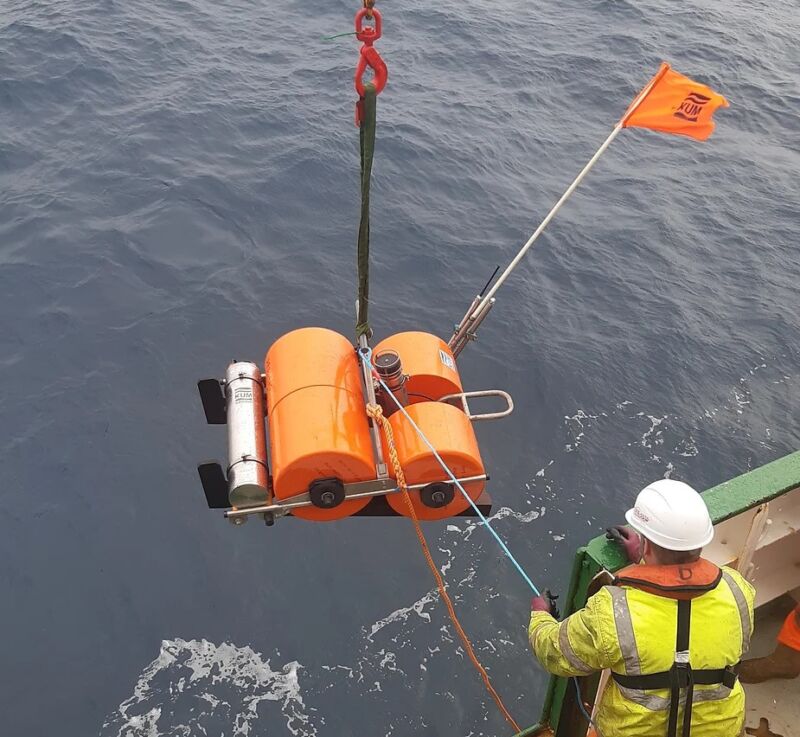New imaging finds trigger for massive global warming 56 million years ago
Ars Technica » Scientific Method 2023-01-13

Enlarge / Scientists about to sink an Ocean Bottom Seismometer to the Atlantic seabed in 2021.
Scientists have scanned a section of the North Atlantic and revealed the remnants of what had been a huge pulse of hot rock that initiated a rapid climate warming event 56 million years ago.
The climate event, known as the Paleocene-Eocene Thermal Maximum (PETM), warmed the already-hot climate of the time by about 5.6° C due to a jump in atmospheric CO2. Levels of that greenhouse gas rose from about 1,120 parts per million to about 2,020 ppm—much higher than today’s 417 ppm. Although it didn’t trigger a major extinction, it still exterminated some deep-sea creatures and tropical plants. Scientists want to understand the PETM better, because it’s an example of how the Earth reacted to a rapid rise in atmospheric CO2 a bit like we’re currently experiencing, albeit starting from a hot, ice-free climate.
Finding a cause
Although the cause of PETM has been debated since it was discovered in the 1990s, more and more evidence has accumulated that points to massive quantities of CO2 and methane emitted due to volcanic activity in the North Atlantic as the primary cause. This activity created what’s now known as the North Atlantic Igneous Province— the same kind of enormous volcanic phenomenon linked to climate disruption and extinctions at other times in Earth’s past, like the end-Triassic, the end-Permian, the early Jurassic, and others.